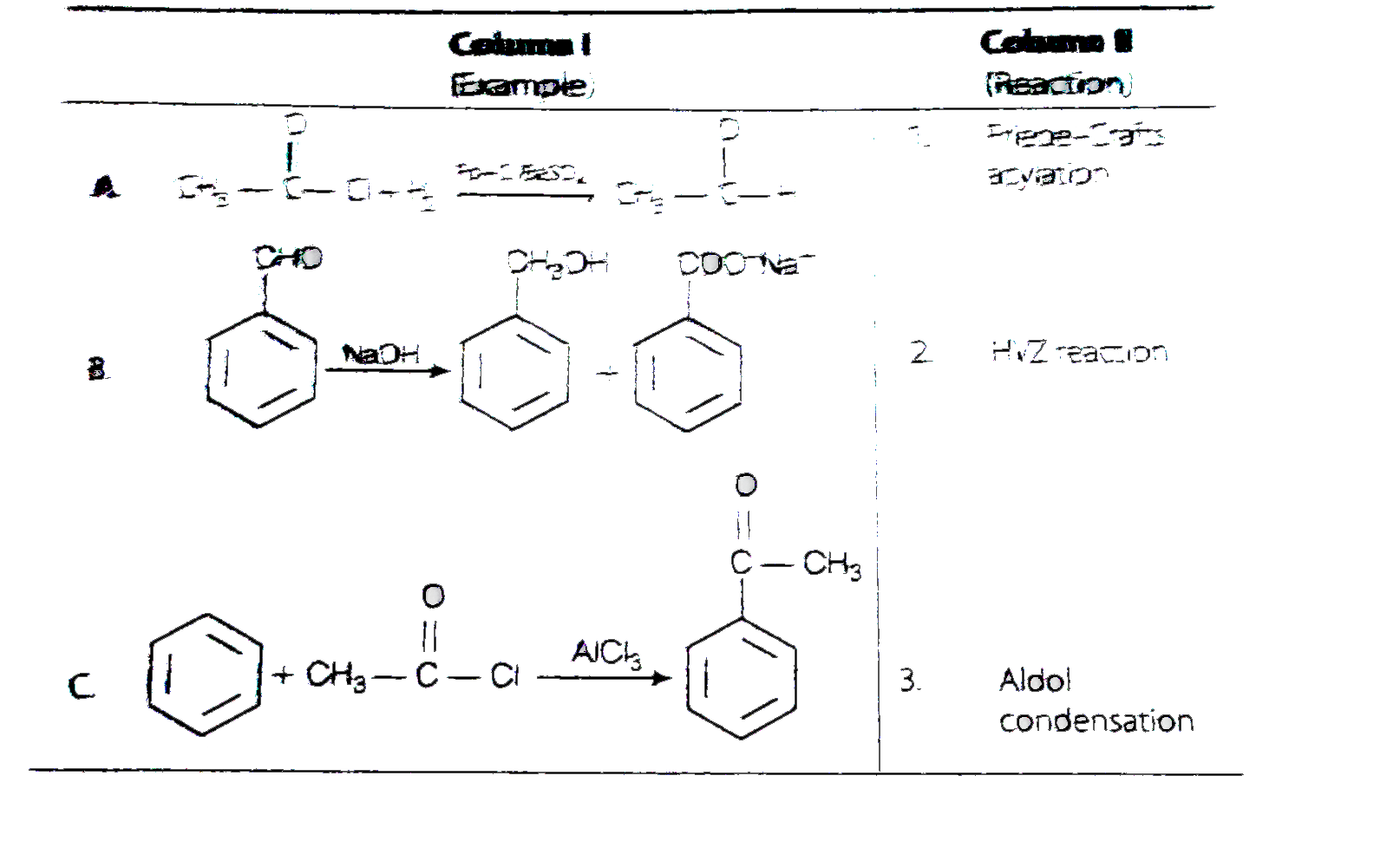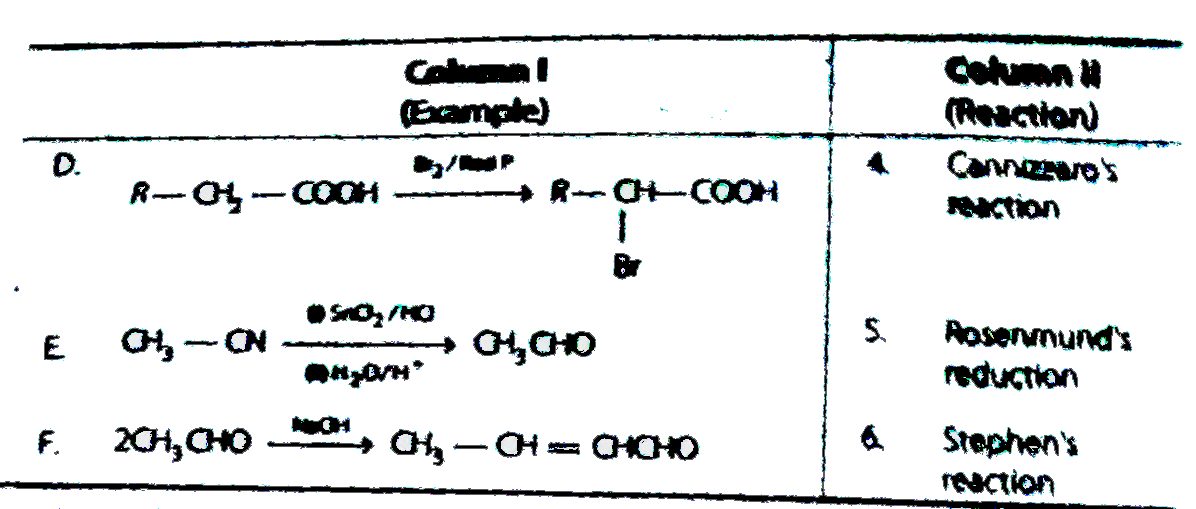Match the example given in Column I with the type of colloid given in Column II.
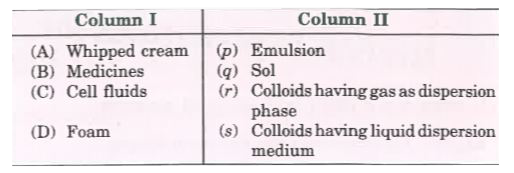
Video Solution
Text Solution
A−(s),B−(p,s),C−(q,s),D−(r)
|
Topper's Solved these Questions
- SURFACE CHEMISTRYBook:MODERN PUBLICATIONChapter:SURFACE CHEMISTRYExercise:COMPETITION FILE (OBJECTIVE TYPE QUESTIONS) (MATCHING LIST TYPE QUESTIONS)
Explore 2 Videos
- SURFACE CHEMISTRYBook:MODERN PUBLICATIONChapter:SURFACE CHEMISTRYExercise:COMPETITION FILE (OBJECTIVE TYPE QUESTIONS) (D. MULTIPLE CHOICE QUESTIONS BASED ON THE GIVEN PASSAGE/COMPREHENSION)
Explore 2 Videos
- SOLUTIONSBook:MODERN PUBLICATIONChapter:SOLUTIONSExercise:UNIT PRACTICE TEST
Explore 14 Videos
Similar Questions
Knowledge Check
Observe the table given below and match the reaction given in column I with the type of reaction given in column II.
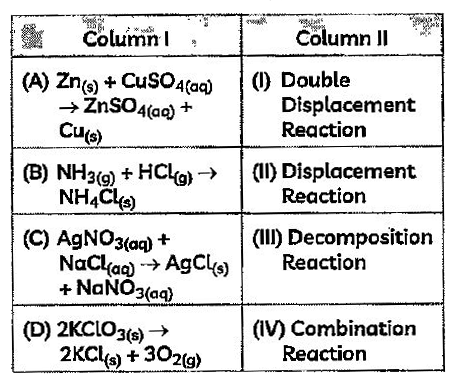 A(A)-(I), (B) - (IV), (C) - (II),(D)-(III)B(A)- (I), (B) - (IV), (C) - (III), (D) - (II)C(A)- (II), (B) - (IV): (C) - (III), (D) - (I)D(A)- (I), (B) - (IV), (C) - (I), (D) - (III)
A(A)-(I), (B) - (IV), (C) - (II),(D)-(III)B(A)- (I), (B) - (IV), (C) - (III), (D) - (II)C(A)- (II), (B) - (IV): (C) - (III), (D) - (I)D(A)- (I), (B) - (IV), (C) - (I), (D) - (III)Match the formulas of oxides given in Column I with the type of oxide given in Column II and mark the correct option.
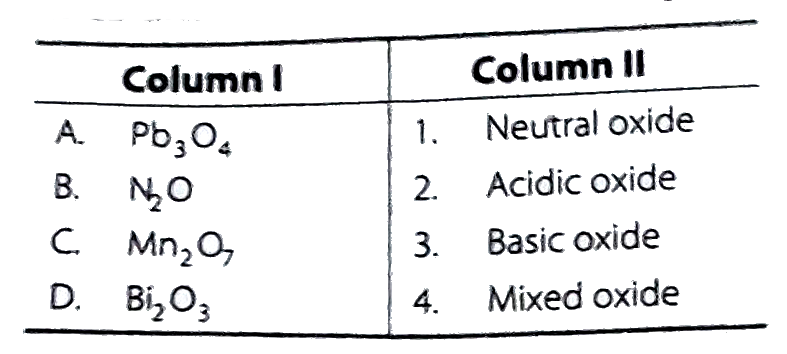 AABCD1234BABCD4123CABCD3241DABCD4312
AABCD1234BABCD4123CABCD3241DABCD4312
Match the reactions given in Column I with the types of reactions given in Column II.
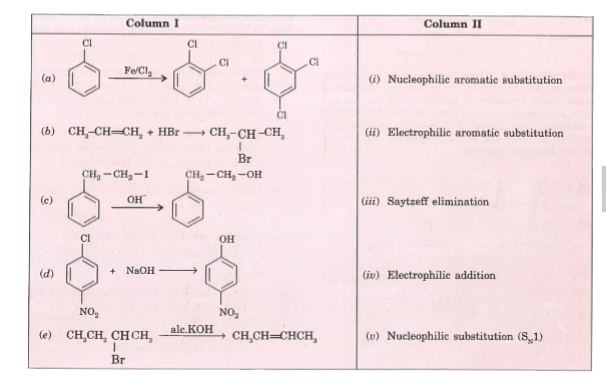
View SolutionMatch the reactions given in Column I with the types of reactions given in Column II.

View SolutionMatch the reactions given in Column I with the types of reactions given in Column II.

View SolutionMatch the examples given in column I with the shapes of the compounds given in column II and mark the appropriate choice .
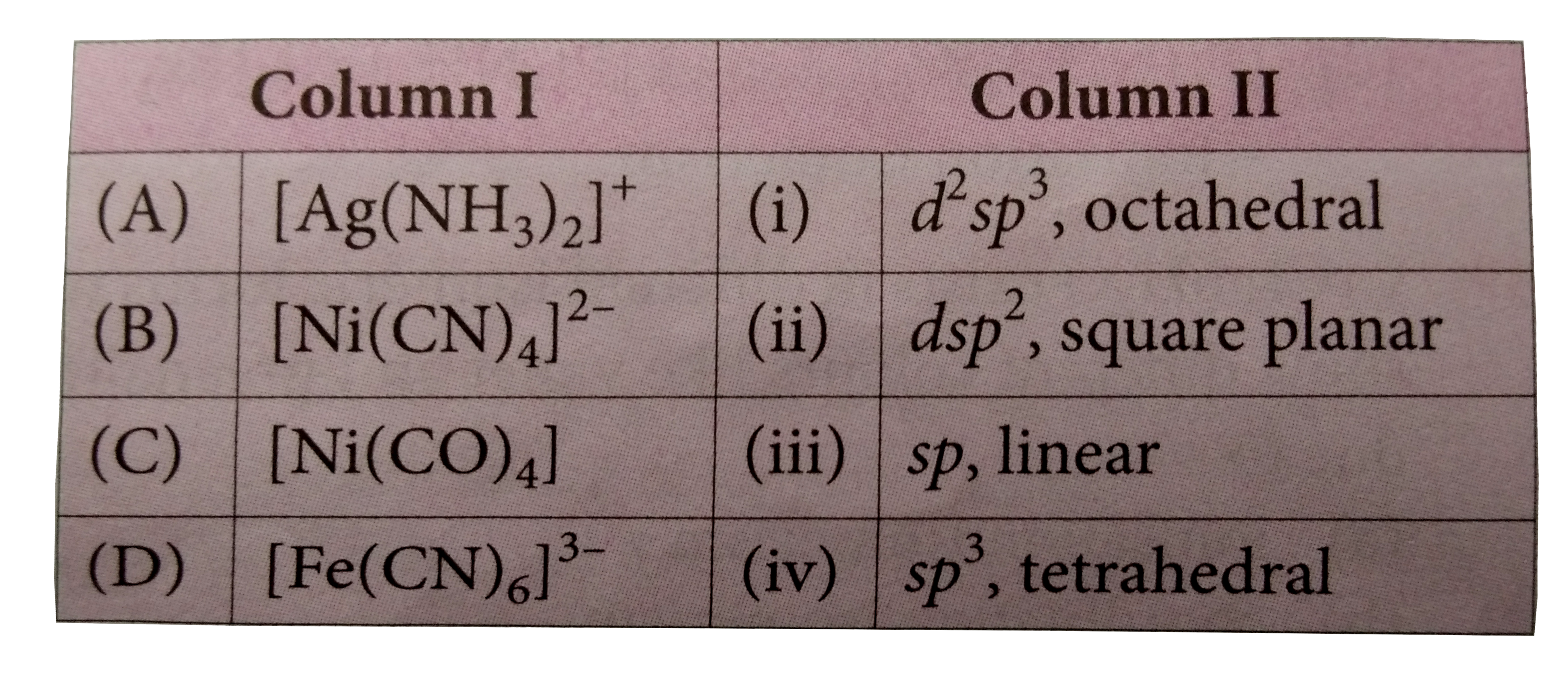
View SolutionMatch the statement given in Column I with the phenomenon given in Column II.
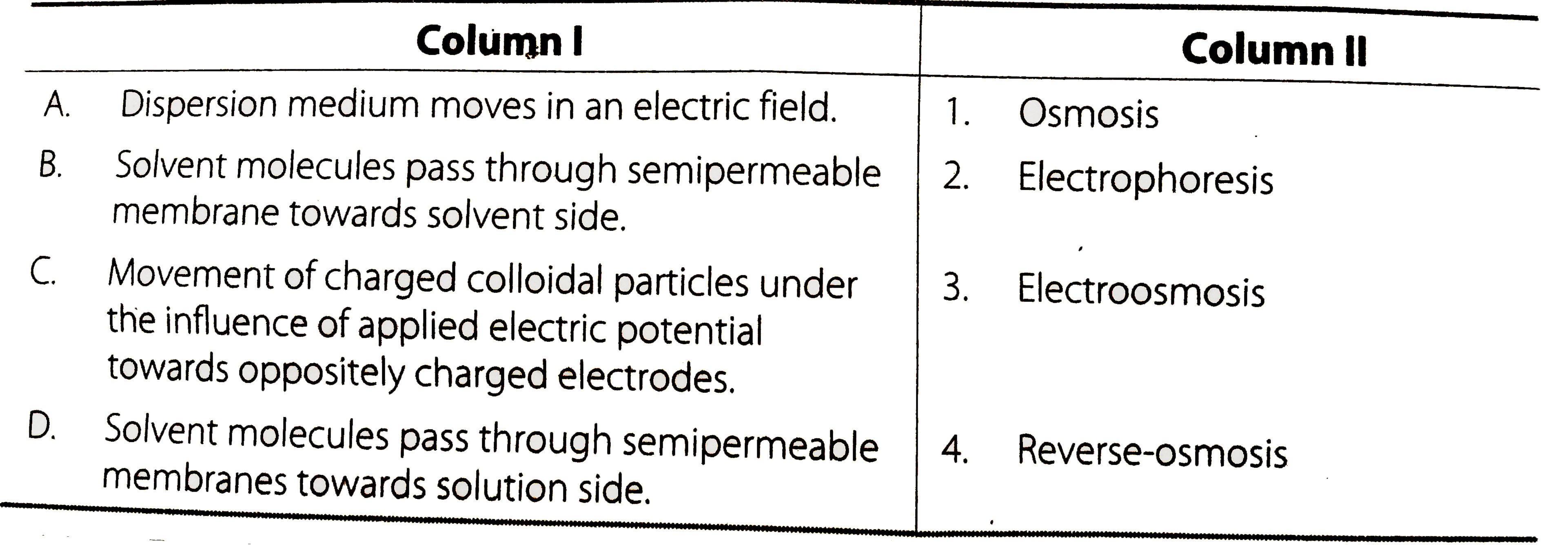
View SolutionMatch the reactions given in column I with the types of reactions given in column II.
 .
.
View Solution
